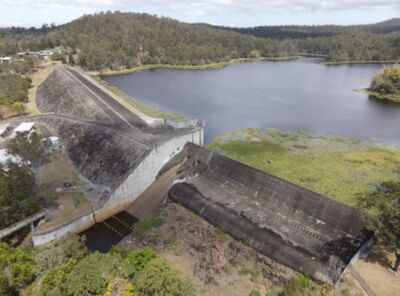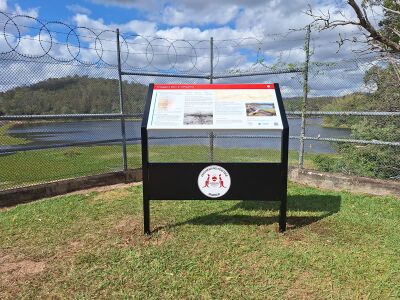Enoggera Dam and Pipeline
The separation of Queensland from New South Wales in 1859 saw the population of the area of the colony now known as Queensland grow significantly. At the time of separation there were no public water supply systems, and the residents were expected to make their own arrangements for water supply. With the increase in population these arrangements for water supply were deemed inadequate and impractical.
With the establishment of the Brisbane City Council in 1860 a water supply committee was established. In 1863 the council contracted civil engineer, Thomas Oldman, to investigate a water supply for Brisbane. Oldman recommended schemes based on both the Brisbane River and Enoggera Creek. The council selected the Enoggera Creek option. Another engineer, Joseph Brady, was responsible for the design and construction of the dam.
The construction of the dam commenced in 1864 and was completed in 1866. The dam is a conventional nineteenth century clay-cored earth-fill dam. It was Queensland’s first major dam and the second major dam in Australia.
Enoggera Dam has two unusual features. It uses three pipes to draw water rather than the traditional one or two pipes. This allowed the delivery potential of the dam to be doubled and the third pipe was used to maintain creek flow during construction and later to draw off lower level polluted water. The pipes were in a rock trench to avoid damage with dam settlement. The second unusual feature is the spillway that was added in 1976. It has an open culverts that, as a flood mitigation system, limits overflows in the early part of the flood to provide an interval during which the peak flows from the downstream catchment can clear before the flood pondage of the reservoir fills and overflows the spillway.
The dam was decommissioned in 2005, recommissioned in 2009 and decommissioned again in 2011. It is no longer the main water supply for Brisbane however it remains intact and operational unlike the other dams constructed in the same period.
Initially 20.3cm and 22.9cm cast iron pipes fed water by gravity 11.6km. to Brisbane City. A second water main 30.5cm was added later.
Engineering Heritage Recognition Program
| Marker Type | Engineering Heritage Marker (EHM) |
| Award Date | August 2022 |
| Heritage Significance | |
| Nomination Document | Available here. |
| Ceremony Booklet Ceremony Report |
Not Available |
| Plaque/Interpretation Panel Image | Available here. |


